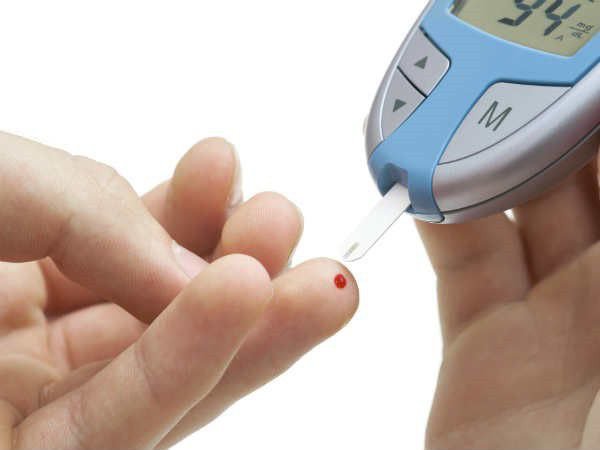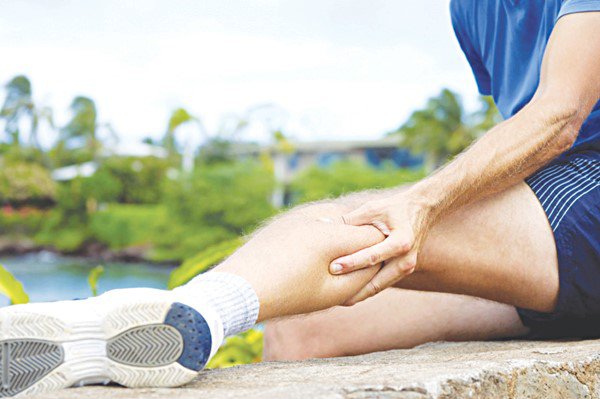Peripheral vascular disease includes which diseases? Causes and warning symptoms
The article was professionally consulted by Doctor Nguyen Van Duong - Interventional Cardiologist - Cardiovascular Center - Vinmec Central Park International General Hospital.
Peripheral vascular disease includes diseases related to the arterial system that supplies blood to the extremities. Although the disease is not life-threatening, if not treated in time, it can greatly affect the movement of the limbs, even necrosis and amputation of the legs.
1. What is peripheral vascular disease (peripheral vascular disease)?
Peripheral vascular disease is also known as peripheral vascular disease. This is the common name for diseases involving the arterial system located far from the heart. The disease is caused by the formation of atherosclerotic plaques and blood clots that block blood vessels, affecting the blood supply to the extremities and can affect the arteries supplying blood to the head. Primarily, peripheral vascular disease is lesions of the arteries in the pelvis, legs, and feet.
Although the disease does not include lesions in the heart arteries and blood vessels in the brain, people with peripheral vascular disease are at increased risk of heart attack or stroke. Patients have no obvious symptoms until the disease is serious..
Although the disease does not include lesions in the heart arteries and blood vessels in the brain, people with peripheral vascular disease are at increased risk of heart attack or stroke. Patients have no obvious symptoms until the disease is serious..
2. What is the cause of peripheral vascular disease?

Kiểm tra sức khỏe định kỳ để sớm phát hiện bệnh
The cause of peripheral vascular disease is the blockage of blood vessels by atherosclerotic plaques. The lumen is narrowed due to deposits on the vessel wall, especially fat. They create plaque on the endothelium of the vessel wall, forming atherosclerosis, obstructing the flow of blood vessels.
Peripheral vascular disease is common in subjects such as:
Smokers People with diabetes People with dyslipidemia People with high blood pressure In which, smoking and diabetes are 2 risk factors. high peripheral vascular disease. The disease also tends to increase in the elderly. If there is one of the risks of disease, it is necessary to pay attention to the abnormal signs of the body and have regular health check-ups to detect the disease and the early signs of the disease.
Peripheral vascular disease is common in subjects such as:
Smokers People with diabetes People with dyslipidemia People with high blood pressure In which, smoking and diabetes are 2 risk factors. high peripheral vascular disease. The disease also tends to increase in the elderly. If there is one of the risks of disease, it is necessary to pay attention to the abnormal signs of the body and have regular health check-ups to detect the disease and the early signs of the disease.
3. What are the symptoms of peripheral vascular disease?
People with the disease with symptoms often feel pain in the legs and cramps in the calves, thighs, and hips. The pain and cramps often occur with walking, exercise, sports, climbing stairs or strenuous activity. These symptoms should disappear quickly or gradually subside after just a few minutes of stopping activity and resting.
Therefore, many patients with these symptoms are often subjective, mistakenly thinking it is old people's osteoarthritis or common arthritis without thinking that they are facing one of the peripheral vascular diseases. dangerous micro.
Therefore, many patients with these symptoms are often subjective, mistakenly thinking it is old people's osteoarthritis or common arthritis without thinking that they are facing one of the peripheral vascular diseases. dangerous micro.

Triệu chứng của bệnh mạch ngoại vi là những cơn đau cách quãng khi vận động
The cause of pain is that when the body is active, blood will circulate more, but due to plaque, narrowing of the vessel lumen, obstructing blood circulation, leading to anemia, causing muscle pain. When the body is at rest, the need for blood supply gradually decreases, pain symptoms also improve and then disappear.
Initially, the disease only causes pain and cramps in the extremities, but when the peripheral vascular disease gets worse, the patient will have additional symptoms such as:
Pain, cramps even at rest Leg pain due to activity but when Rest does not help Wounds in the feet, toes take long to heal One foot or both feet is colder than the hands Toes, feet are necrotic If the pain appears repeatedly, repeated need to Go to the doctor and pay attention to describe the situation in detail to the doctor, to avoid the serious progression of the disease before proceeding with treatment.
Initially, the disease only causes pain and cramps in the extremities, but when the peripheral vascular disease gets worse, the patient will have additional symptoms such as:
Pain, cramps even at rest Leg pain due to activity but when Rest does not help Wounds in the feet, toes take long to heal One foot or both feet is colder than the hands Toes, feet are necrotic If the pain appears repeatedly, repeated need to Go to the doctor and pay attention to describe the situation in detail to the doctor, to avoid the serious progression of the disease before proceeding with treatment.
3. Peripheral vascular disease includes which diseases?
3.1. phlebitis
Phlebitis usually occurs in the arms. The disease is divided into two types: superficial phlebitis and deep phlebitis.
Superficial phlebitis: People with superficial phlebitis will see red and hot veins. The vein is painful and hard to the touch, and there is even a slight swelling along the vein. The disease can cause fever, body fatigue, aches and pains. Deep vein inflammation: Symptoms of deep vein inflammation are severe pain. The patient has a high fever and is extremely tired. The vein area is not only painful but also has the potential for venous thrombosis, which is more dangerous, a pulmonary embolism. When having deep veinitis, the patient needs to be taken to the hospital for medical examination and treatment.
Superficial phlebitis: People with superficial phlebitis will see red and hot veins. The vein is painful and hard to the touch, and there is even a slight swelling along the vein. The disease can cause fever, body fatigue, aches and pains. Deep vein inflammation: Symptoms of deep vein inflammation are severe pain. The patient has a high fever and is extremely tired. The vein area is not only painful but also has the potential for venous thrombosis, which is more dangerous, a pulmonary embolism. When having deep veinitis, the patient needs to be taken to the hospital for medical examination and treatment.
3.2. Varicose vein
In normal people, venous blood flow to the heart is always stable at a level under the support of muscle contraction and venous valves. The venous valve acts as a one-way door to prevent blood from flowing backwards. If the valve is infected or damaged, the blood flow is too slow, causing the veins to stretch and twist into bunions. This is very common with superficial veins in the legs.
Varicose veins is a genetic disease, people who have a close family member with varicose veins will have a higher risk of developing the disease than the general population. The prevalence of the disease is higher in women than men, especially in the elderly, preventing overweight and obesity or people who have to stand for a long time.
Manifestation of the disease is veins floating into zigzag lines, blue-violet on the skin. The patient will feel a stinging sensation in the leg. At the end of the day, the ankles are often swollen.
3.3. Arterial occlusion
Atherosclerotic plaques are deposited in the lumen of the arteries, causing narrowing of the flow, causing the arteries to become blocked. The lack of blood flow to the limbs causes pain and numbness in the limbs, which over time can lead to the risk of infection of the limbs. The more severe the pain, the more frequent the pain, the more severe the degree of obstruction. The more active the bout is increasing. The claudication makes it difficult for the patient to exercise and move, even when walking.

Các bệnh mạch ngoại vi gây tê bì chân tay
If the artery is severely blocked, the blood flow to the extremities is severely reduced, the feet are cold and blue-violet, the pulse in the legs is weak, the tissues in the corresponding limb are at risk of necrosis, even having to amputate the limb. .
When the above signs appear more and more, it is necessary to go to the doctor as soon as possible so that the doctor can conduct a timely examination, diagnosis and treatment.
When the above signs appear more and more, it is necessary to go to the doctor as soon as possible so that the doctor can conduct a timely examination, diagnosis and treatment.
3.4. Buerger's disease
Buerger's disease causes the blood vessels in the limbs to become inflamed, especially those in the feet and hands. The disease causes narrowing and blockage of blood vessels, causing the blood circulation to the extremities to be obstructed, the blood supply to the tissues in the legs and arms decreases, causing numbness, pain in the limbs, tissue damage and necrosis. death.
People with Buerger's disease often feel cold hands and feet, pale or red, blue-violet. Hands and feet are slightly swollen and painful, especially when exercising. Even the patient feels tingling, numbness, burning pain in the limbs. Pain that goes away with rest is called intermittent pain. Patients often experience more pain at night or in cold weather. If the pain occurs even while resting, the condition has become serious.
Buerger's disease is common in smokers. Limiting smoking is one of the ways to reduce the risk of disease.
3.5. Raynaud's disease
Raynaud's disease affects the blood circulation in episodes. Each episode lasts a few minutes, even an hour. During attacks of Raynaud's disease, the blood flow to the extremities is severely reduced, causing cold and numb hands and feet, pale fingers or toes. When the blood supply is stable and cold, the patient's limbs will become warm and pink but still have pain.
When the above signs appear more and more, it is necessary to go to the doctor as soon as possible so that the doctor can conduct a timely examination, diagnosis and treatment.
Để đặt lịch khám tại viện, Quý khách vui lòng bấm số HOTLINE hoặc đặt lịch trực tiếp TẠI ĐÂY. Tải và đặt lịch khám tự động trên ứng dụng MyVinmec để quản lý, theo dõi lịch và đặt hẹn mọi lúc mọi nơi ngay trên ứng dụng.
Bài viết này được viết cho người đọc tại Sài Gòn, Hà Nội, Hồ Chí Minh, Phú Quốc, Nha Trang, Hạ Long, Hải Phòng, Đà Nẵng.






